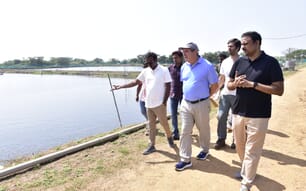Only debris and straggles of dead marsh grass used to break the expanse of mud at low tide. Crabs, shrimp, and small crustaceans mob the seaweed in abundance. What makes it so popular? Not its food value.
On mudflats near Savannah, Ga., Jeffrey Wright, National Centre for Marine Conservation and Resource Sustainability, and colleagues found that the tiny native crustacean Gammarus mucronatus (one of the 9,500 species of amphipod, which includes sand fleas) does not eat much of the seaweed. Rather, its attraction is structural.
The seaweed protects the small crustaceans from predators at high tide and from the dry heat of the flats at low tide. G. mucronatus was up to 100 times as abundant on seaweed invaded mudflats.
The arrival of an aggressive invader disrupts the food webs and physical and chemical characteristics of the environment it enters.
Disruption is often bad for native species that get shaded, crowded, or eaten by the invader, and reports of the disastrous consequences of invasive species have grown familiar.
But the story for individual species is more complicated, as the presence of the invader is sometimes a benefit, either as a new source of food or, as in this case, of shelter.
Engineering or food? Mechanisms of facilitation by a habitat-forming invasive seaweed (2014) JT Wright, JE Byers, JL DeVore, and E Sotka. Ecology 95(10): 2699-2706.


